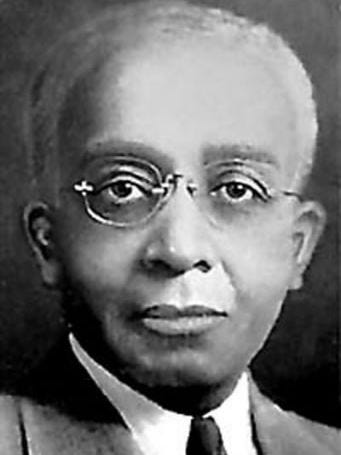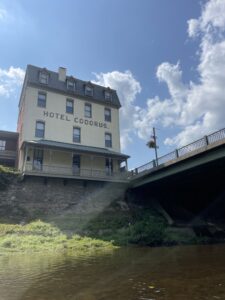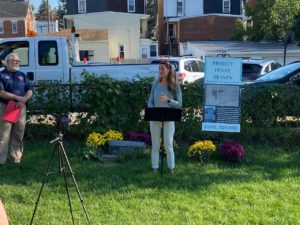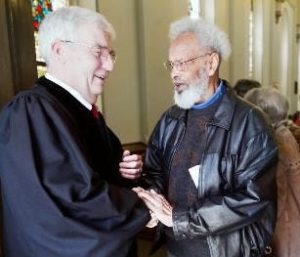Segregated in death: Lebanon Cemetery
North York’s historically Black cemetery
1404 N. George St.
York
The situation
Lebanon Cemetery, founded in 1872, is nestled on a hill in what was once remote acreage outside York city. It is the burial site of former slaves, military veterans, a bishop and other religious leaders and prominent members of the Black community. A group of preservationists, the Friends of Lebanon Cemetery, have begun work on neglected areas of these burial grounds, discovering long-covered graves and telling the stories of those interred there.
“Their struggles, their hardships, their passions helped pave the way for future generations in York,” the group’s website states. A member of that group, Samantha Dorm, has written: “There was segregation, even in death.”

The witness
Dr. George W. Bowles, a leader in the Black community, is among the prominent citizens buried in Lebanon Cemetery. He and the Rev. Thomas Montouth are counted as the top leaders in the black community in the first 50-plus years of the 20th century. Bowles, a York High grad headed the National Medical Association in 1938, and was active in medical organizations at every level.
Here’s an example of Bowles’ contributions, coming at one of the toughest moments in York County and world history: He publicly urged Blacks to be bold in breadlines in the Great Depression, to ensure they learned their rights and to receive the entire share of welfare allocated to them.
Montouth, also buried in Lebanon Cemetery, was a voice for civil rights in York for decades, after assuming the pastorate of Faith Presbyterian Church in 1928. The minister became a charter member of the Crispus Attucks Community Center and served on its board for years.
The questions
- Gravestones identify a person’s name and age, but not too much else. It takes deliberate research and storytelling to keep the memories and people alive. The Friends of Lebanon Cemetery are ensuring that the lives of the people who are buried there are remembered. What is the importance of maintaining grave yards, and what can we learn from the Friends’ model of engaging with our communities? In addition to name and age, what else should be included on a gravestone? Or, can we memorialize people in other ways?
- De facto segregation still exists. We see this in housing and, as the Friends of Lebanon Cemetery point out, the places people are buried. How can we work harder to integrate our community? What can York County do to ensure we don’t continue down the path of racial separation?
Sources and links: The Friends of Lebanon Cemetery’s website; James McClure, “Almost Forgotten.” YDR Photos.
— By JAMIE KINSLEY and JIM McCLURE




Pingback: Hometown History - Explore people, places and issues - Witnessing York
Pingback: Unsung York County Civil War sites to visit - Witnessing York
Pingback: Their segregated sanctuary prospered, and then disappeared - Witnessing York
Pingback: Prime time ahead to take in York County history - Witnessing York